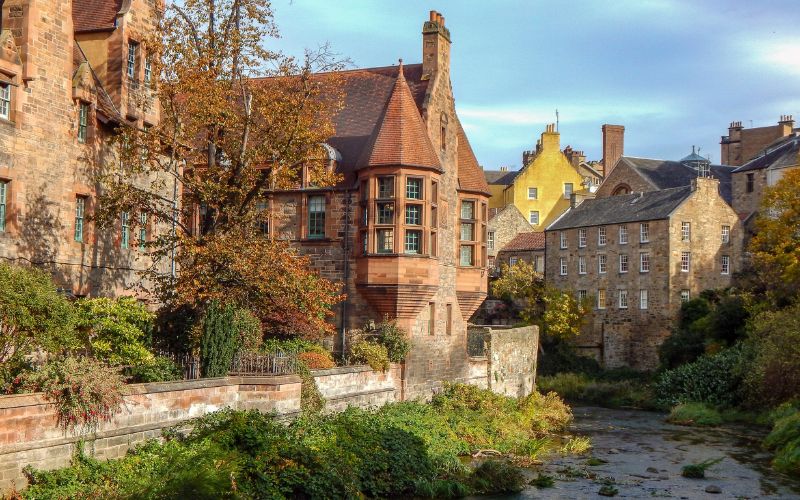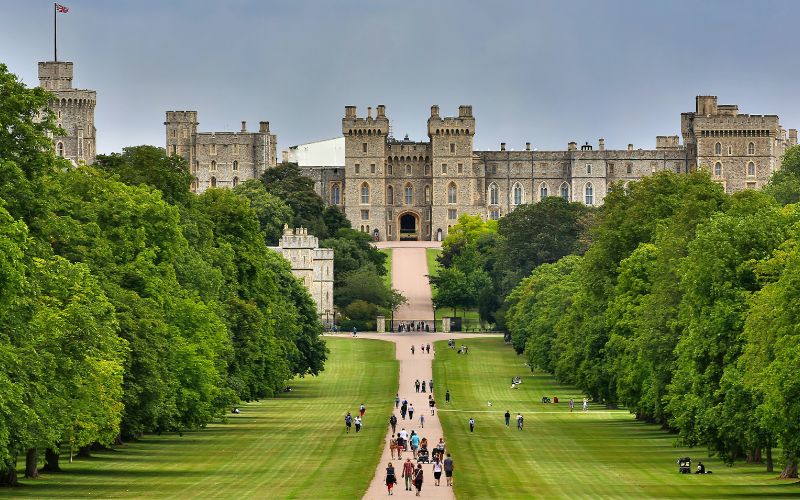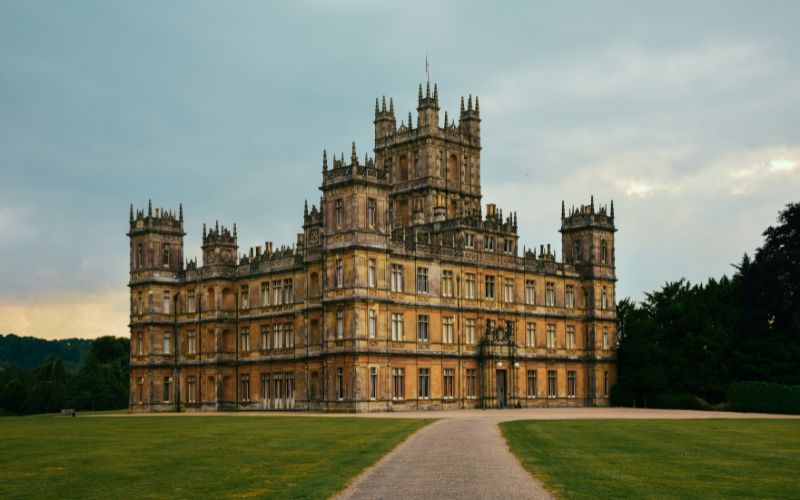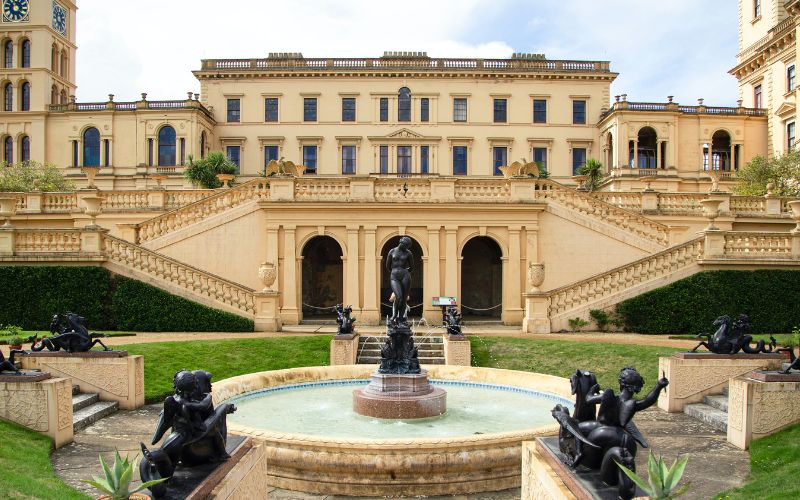However most people today know Hampshire as the birthplace of the famous 18th century authoress Jane Austen, who is said to still wander the streets of Winchester at night. Here are a few other places that are said to be haunted and the history behind them…
5. Winchester Cathedral, Winchester
It may surprise some of you to know that Winchester Cathedral is over 1,000 years old, so it may be unsurprising that it has its fair share of ghost stories too.
Once the ruling jewel of the country under the Anglo Saxons and the Normans, a church was erected on site in 645 AD becoming the most important church in the whole of England. By 1000 AD, the church was developed into a cathedral and gained notoriety as the ‘grandest cathedral in Europe’.
Today you can still see some of the original Norman design in the cathedral’s round arched crypts, and the medieval makeover it received in the 12th century including its ‘soaring gothic arches’, medieval carvings, and 1.5 ton Tournai marble font.
It still retains its title as one of the largest gothic cathedrals in Europe, however, it has also gained a more ghostly reputation over the years.
Reports of phantom monks progressing down the aisle of the cathedral have emerged, with staff and visitors both explaining that they slightly sink into the floor as the walk. Many believe that this is because of where the old cathedral floor was raised during renovation works.
The sightings don’t stop there though. The apparition of a limping monk has been spotted on numerous occasions wandering the grounds of the cathedral, where onlookers have also reported the sound of disembodied chants in the dead of night.
Needless to say, the cathedral has a very long history and is even the final resting place of Pride and Prejudice writer Jane Austen; who has been spotted walking down Winchester high-street in the early hours of the morning.
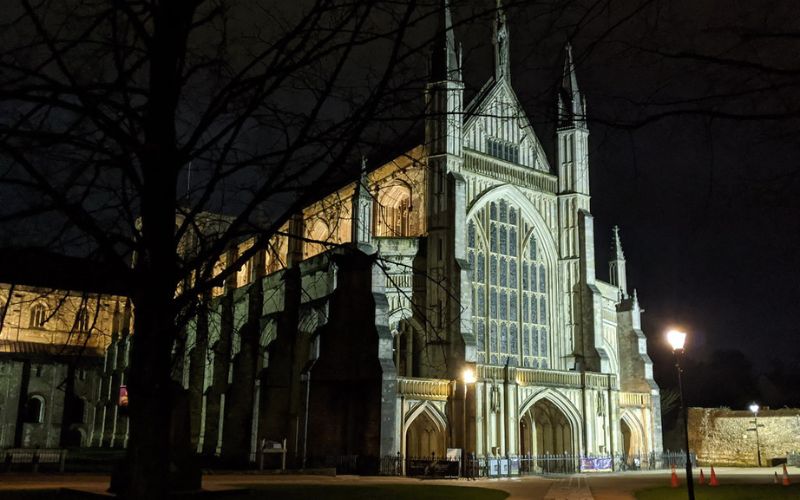
4. The Tudor House, Southampton
In the heart of Southampton’s old town, you can find a timber framed property known as The Tudor House. The property was constructed in the late 15th century, today revelling in 800 years of history.
With its stunning Tudor exterior, the Tudor House in Southampton is the city’s oldest museum, most important building, and one of its most haunted sites.
Multiple calls have been made to the police in the past from onlookers reporting a ‘break in’ but upon the arrival, there had been no signs of a break in and no one at the property.
A Medium was eventually brought in to investigate claims of paranormal activity in the house. She identified a spirit who she believed to be ‘bored’. So, she left a ball for it to play with and the next day, it was gone.
More recently, a paranormal investigation at the Tudor House picked up a man sitting in a chair through the team’s thermal imaging equipment.
In the past, visitors also claimed to see figures gliding through bricked up doorways and walking across certain rooms. This included that of a dark shadowy spirit wandering through the corridors and the ghost of a young woman on the first floor causing disturbances.
The building and its exterior have been well preserved through the centuries, giving its name to its design, and is today host to all kinds of events (and maybe even some ghouls!).
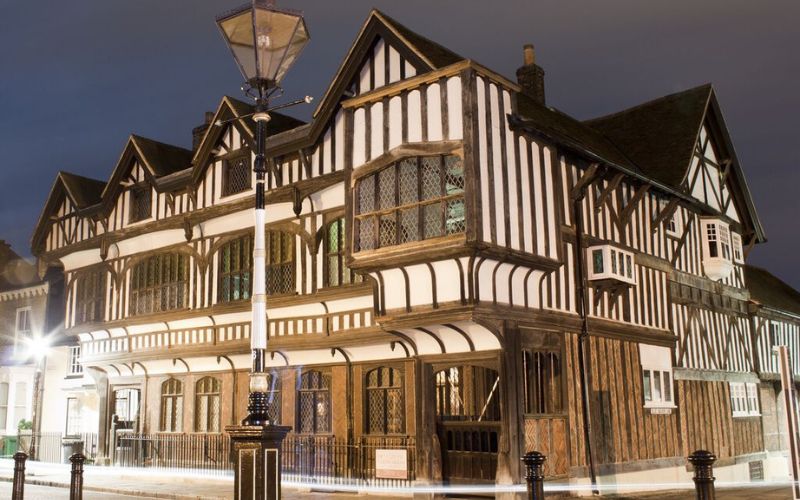
3. Breamore House, Fordingbridge
Built on the outskirts of the New Forest by William Doddington in 1583, Breamore House was constructed in the village of Breamore during the great ‘Tudor rebuild’.
The property is open to the public 6 months a year, however, that hasn’t stopped others occupying the site long after the public have gone…
It has long been said that, following a dispute with a neighbour, one of the former owners killed himself.
Following the death of her husband his wife, Lady Doddington, ordered a portrait to be painted of her in mourning to capture her everlasting grief. On her deathbed, she cursed the painting and anyone who tried to move it.
However, this wasn’t the only tragedy that would befall Breamore House. Lady Doddington’s son, Sir William Doddington, not only lived to see his father die but also see his wife slain and his own son, Henry, executed.
Henry Doddington reportedly had enough of his mother disciplining him and killed her. Her ghost is now said to haunt the Blue Room where she was murdered.
The property was bought in 1748 by King William III’s court physician, Edward Hulse M.D, where it still remains in the family to this day.
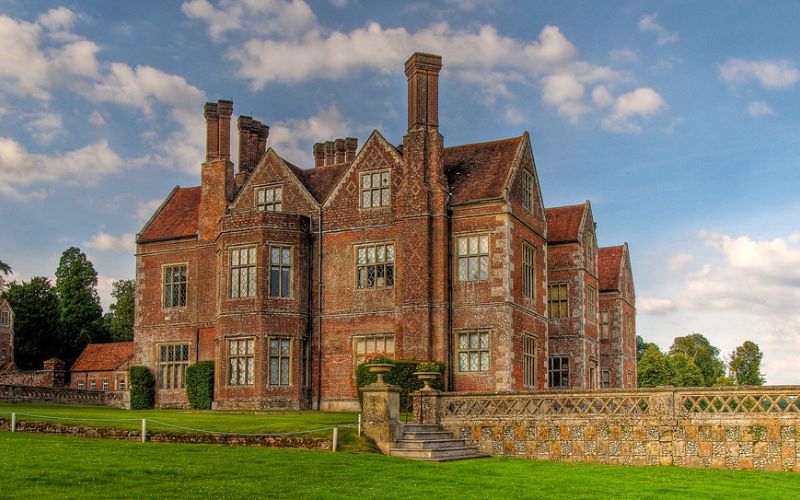
2. Hinton Ampner, Alresford
Dating back almost 500 years ago, Hinton Ampner has had a number of different owners who have each developed the property to reflect the architectural style of their time.
Whilst there are no records about who the original developer was, the building started out as an elegant Tudor manor, said to have been constructed in the 1540’s. The lease was taken on by the Stewkeley family in 1597 and passed down through the years.
Upon sir Hugh Stewkeley’s death in 1719, the estate was inherited by his daughter Mary, where reports first emerged of strange happenings at the manor. So strange, in fact, that Mary kept written records of all the unexplainable occurrences she and her family had witnessed.
At first, they thought the strange noises had come from their servants, which included the slamming of doors in the middle of the night. However, this was not the case.
Fearing they had an intruder; Mary had every lock at the manor changed, but the noises didn’t stop.
A dark figure shrouded in a long coat had been seen by the servants on multiple occasions, whilst the kitchen maids said a tall woman in a grey dress would pass through the walls of the cellar.
Mary confided in her brother about these apparitions and he and his friend agreed to keep watch.
That night, Mary woke to what sounded like a “gunshot” and “the groans of a person in agonies or expiring” and her brother described hearing an “immense weight that seemed to fall through the ceiling to the floor”.
Not knowing who or what was causing all of these noises, the family moved out in 1772 and the property was demolished in 1793 by Mary’s son, Henry, to make way for a new Georgian-style manor.
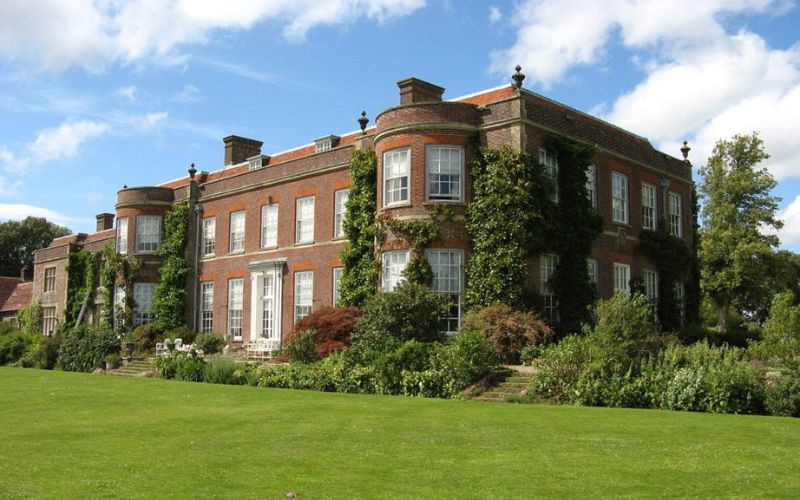
However, upon demolition, workmen unearthed a wooden box containing the skull of a small child - thought to be the product of an extramarital affair.
The Georgian house was built 60 yards to the south of the original site and constructed using plain yellow brick, keeping some elements of the Tudor manor (such as the stables).
Eventually, the Georgian house was replaced with a Victorian style property by Mary’s descendant John Dutton Thomas who appointed the work of a local building surveyor, Mr Kemp.
Kemp designed a mock-Tudor Gothic extension, beginning construction work in 1865, encasing the Georgian House and transforming it into an entrance hall as part of the new design.
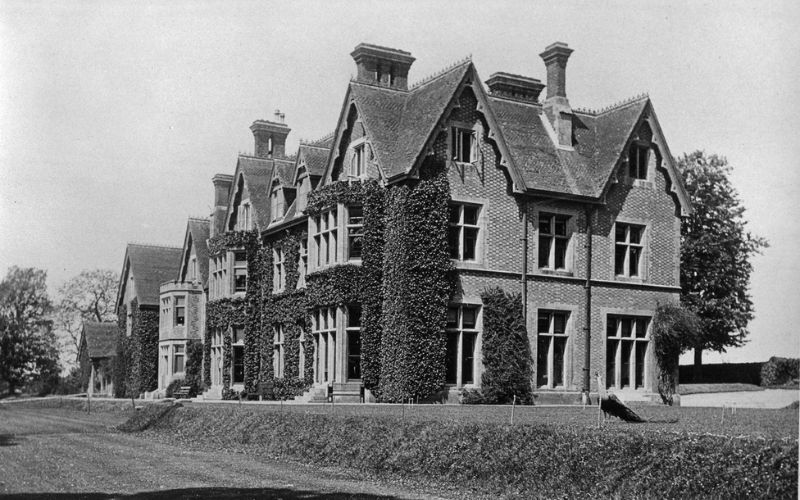
The new build was completed within three years but was later restyled in 1935 by Dutton’s grandson Ralph. Architects Lord Wellesley and Trenwith Wills set out to restore the original Georgian build, creating a Neo-Georgian aesthetic.
The design was short lived though, after a fire broke out in 1960, devastating the property. Hinton Ampner was restored to its former Georgian glory three years later and is the house you see today. As for the ghostly goings on, they say they never went away…
1. Wymering Manor, Portsmouth
Reputed to be one of the UK’s most haunted buildings and Hampshire’s most haunted property, Wymering Manor has a dark reputation.
Surprisingly, the Grade II* listed building’s first ever owner was King Edward the Confessor in 1042 but of course it has since had many, many alterations to its structure and design.
The manor we see today is from the 16th century and has served as a youth hostel, family home, and even a vicarage in its time.
Today, it is allegedly so haunted that the property’s security guards refuse to work there alone, and the manor even failed to sell at auction due to its reputation.
Local legend has it that the manor has several different ghosts including its most famous tale of the ‘lady in the violet dress’.
Former owner, Thomas Parr, claimed to have awoken one night to the lady standing at the end of his bed. It was soon apparent that Parr recognised the lady as his cousin who had passed away in 1917.
According to Parr, they spoke for a few minutes before she explained “I must leave you now as we are waiting to receive aunt Em” and then disappeared. The next morning, Parr received a telegram informing him that his aunt Em had, in fact, died that very night.
Another story describes the locking and unlocking of the Blue Room when no one is there, and visitors reporting the sound of nuns singing and chanting around the estate.
Other common sightings include that of a very distinguished naval officer, Sir Francis Austen, who can be seen galloping along the lane outside of the manor, and the apparition of a nun with bloodied hands standing at the top of the staircase going into the attic.
Staff and visitors have been known to avoid a certain ‘panelled room’ which is said to emit an oppressive air, leaving people with the urge to run. Others have insisted they’ve felt a hand on their shoulder when in that very room.
Today, the building is governed by the Wymering Manor Trust who have set out to restore, convert, and build a sustainable future for the property. For now, it continues to sit abandoned in the heart of Portsmouth…well, mostly.
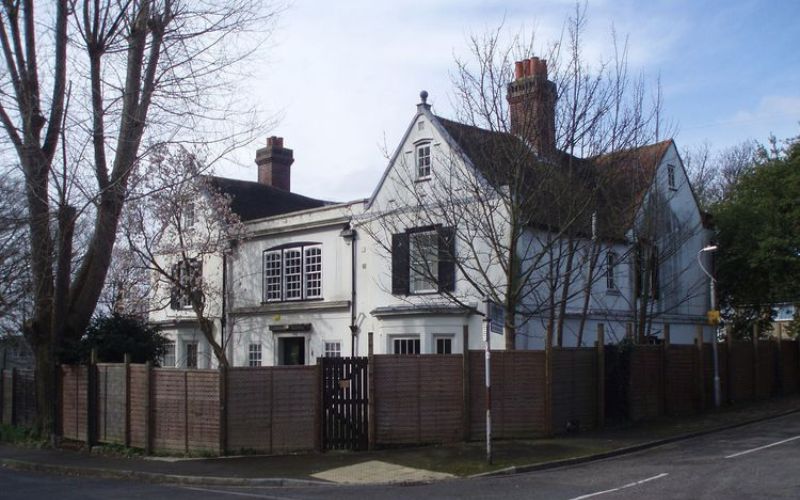
Who are we?
Our team of Chartered Building Surveyors work closely with estate agents, landlords, lenders and local authorities across London and the South Coast to proactively navigate a changing horizon. From ensuring new projects are delivered on time and in budget, to delivering upgrades on behalf of councils.
Read more about our solutions here:
Reinstatement Cost Assessments
Planned Preventative Maintenance
Alternatively, email us at enquiries@sillencehurn.co.uk or call our Southampton team on 02380 014786 or London at 020 3143 2128.
If you're looking for the next steps in your career why not check out our latest opportunities and see if we align with you and your values!


